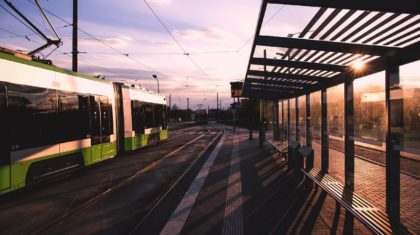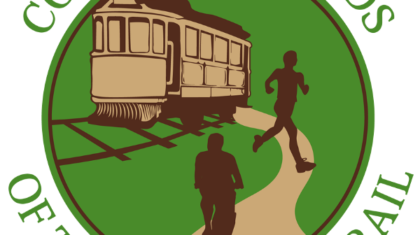Landscape Architecture has great breadth as a design profession, with significant impacts on communities and quality of life. Alta’s design group includes a collaborative team of landscape architects and landscape designers who understand that truly successful projects are a reflection of their communities. As landscape architects, we have the instincts to shore up the attributes that make communities unique by threading in art, environmental education, and nature, and packaging it into a place.
At Alta, we use an interdisciplinary design approach where landscape architects and engineers work collaboratively in an integrated studio environment. Our practice is not constrained by the pragmatism of pure engineering, nor by the idealism of pure landscape architecture. By working together, two seemingly divergent disciplines learn from and support each other to create places to move and connect people in their communities.
As we celebrate World Landscape Architecture Month, we’re reflecting on some of the projects that incorporate innovative design to create active, healthy communities.
Razorback Greenway


In July 2009, Alta began a regional greenways plan for NW Arkansas. The 36-mile greenway now links the six major municipalities of northwest Arkansas, the University of Arkansas, hospitals, commercial centers, and the headquarters of major employers. Alta produced construction documents and right-of-way information and managed construction administration, including right-of-way acquisition for 16 miles of the greenway that runs through the towns of Springdale (Walter Turnbow Park), Rogers, and Lowell.
CV Link


The Coachella Valley’s CV Link presents a bold new approach to mobility. In 2013, Alta began development of the CV Link master plan for a nearly 80-mile multimodal pathway connecting nine cities in the Eastern Riverside County region. After the master plan was complete, Alta began implementation of work with the first 2.3-mile segment, stretching between Palm Springs and Cathedral City, completed last year. The next phase will break ground in early 2020. The pathway system accommodates low-speed electric vehicles (LSEVs) in addition to bicyclists and pedestrians. Wayfinding is intuitive via bold cues of color indicating one’s orientation depending on the direction one is facing. The innovative and efficient use of energy is a strong theme showcased with the use of solar power, motion sensing lighting, wind activated art elements, air quality monitoring stations, and pathway counters that convert trips to miles, calories and GHG’s saved.
Memphis Medical District Streetscapes




In 2016, Alta helped assemble a conceptual planning playbook for over 40 intersections in the Memphis Medical District that looked at repurposing street space into people space. In the subsequent implementation phases of the project, Alta compiled construction documents for interim improvements, which included striping, pavement treatment bump out areas, landscaped planters, and site furnishings. Phase 1 of the construction included intersection improvements for eight intersections in the Medical District and phase 2 included a five lane to three lane road diet of Manassas Street complete with separated bike lanes and an artistic mid-block crossing at Health Sciences Park. Both phases received coverage in PeopleforBikes’ blog and Streetsblog in 2018 and 2019. Construction is underway for Phase 3 of the project, which will improve five intersections as part of a City repaving project that converts Dr. Martin Luther King, Jr. Avenue with separated bike lanes.
West Ashley Greenway & Bikeway Master Plan



In 2018, Alta led a multidisciplinary project team to provide a master plan vision for the West Ashley Greenway and Maryville Bikeway for the Charleston Parks Conservancy. The Greenway and the Bikeway are the two major trails in the West Ashley area of Charleston and this was the first comprehensive plan for both trails as a single linear parks system. The master plan provided context-based theming for the trails along with trail design standards and ideas for activation and placemaking enhancements, and the plan also included a public art component. Two major guiding principles for the plan were to give bicyclists and pedestrians the priority at street crossings, and to make the trails safe, welcoming, and beautiful. The recommendations were focused on place design and experience as well as the trail design and street crossings. Now that the plan is done, the Charleston Parks Conservancy is looking to rebrand the Bikeway, add wayfinding signage, and implement two of the public art projects as a result of the master plan.
Louisville Park Trails Plan
Alta is working with Louisville Metro Government and the Olmsted Parks Conservancy to develop a sustainable trails plan for Louisville’s three Olmstedian Parks: Cherokee, Iroquois, and Seneca Park, a collective 1,170 acres of parkland. The plan will take into account the historic trail routes designed at the turn of the 19th century by the father of landscape architecture: Frederick Law Olmsted. The primary focus of the plan will be determining future trails in each park that are sustainably designed and built, providing equitable access to park users, and balancing user needs and demand.
West Laurel Hill Cemetery



West Laurel Hill Cemetery’s Nature’s Sanctuary represents a paradigm shift in cemetery design, maintenance, and ecological impact. With a guiding focus on the Triple Bottom Line, (people, planet, profit), the green cemetery ecological restoration project is a successful proof of concept. The cemetery achieved USGBC SITES Gold certification and cemetery sales are well beyond expectations.
Our Design Staff Has Been Busy!
Here are some of the things we’ve been up to this year, and where you can find us in the coming months.
Alta staff regularly give back to the landscape architecture profession by volunteering their time with the American Society of Landscape Architects (ASLA). Mary Stewart is the Oregon state chapter president and Britt Storck is on the Georgia state chapter Executive Committee, busy planning the 2019 Southeast Regional ASLA Conference. Daniel Ashworth serves as co-chair of the ASLA Urban Design Professional Practice Network (PPN), and will be presenting at the PPN live event at the ASLA National Conference Expo in San Diego. Daniel will also present at a panel session for the Memphis, TN Manassas Street interim design road diet project for both ASLA National and the Southeast Region ASLA conferences. Adam Supplee represents the Pennsylvania — Delaware Chapter on the ASLA National Board of Trustees and is also a member of the ASLA Government Affairs Committee. Liam Cleary serves as the Pennsylvania — Delaware state chapter Public Relations Chair. On April 30th, Adam and Liam will be presenting a webinar on the West Laurel Hill Cemetery Nature’s Sanctuary and its recent achievement of USGBC SITES Gold status.
You can register for the webinar here, or sign up for our monthly newsletter for regular updates!


